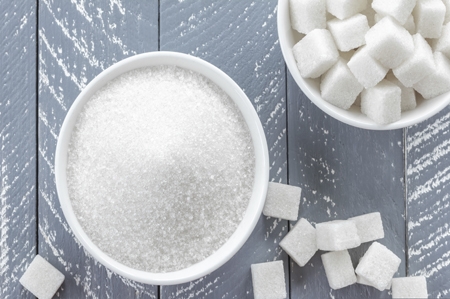Sugar price jump ‘may spur food groups to buy mills’
Category: Sugar
 (Agrimoney) – The jump in sugar prices may spur sweetener users to buy producers to ensure their supplies, said Rabobank, focusing on Asia, where food and drink companies face particular margin pressure.
(Agrimoney) – The jump in sugar prices may spur sweetener users to buy producers to ensure their supplies, said Rabobank, focusing on Asia, where food and drink companies face particular margin pressure.
Sugar prices, up 55% on New York’s futures market so far this year, “are expected to remain well supported by fundamentals over the next 12 months”, Rabobank said, restating a forecast of a 5.5m-tonne world output deficit in 2016-17, following a shortfall in 2015-16 too.
The impact of the market squeeze is being felt particularly keenly in Asia, where output in India, the world’s second-ranked producer, is thanks to dryness forecast falling further, after a 4m-tonne drop in 2015-16, returning the country to net imports.
In Thailand, the second-ranked sugar exporter, output “will remain constrained” in 2016-17, reflecting weak cane sowings, “and hence it will not help in reducing the regional supply and demand gap”.
While, in China – the second biggest sugar consuming country, after India – will manage some increase in output in 2016-17, to some 10m tonnes, overtaking Thailand in production, the extra volumes will come in well short of demand needs.
“Asian sugar inventory will reach historic lows,” Rabobank said.
‘Pressure on gross margins’
The dynamics leave Asia, which had witnessed only one regional sugar production deficit in the previous 10 years, facing two successive seasons of shortfall.
The implications are particularly important for the food and drink companies, responsible for some two-thirds of industrial demand for sugar demand in Asia, given their relatively weak margins compare with Western peers.
“Food and beverage sector gross margins in Asia are two-thirds those in Europe, and the situation is only slightly better when compared to North America,” the bank said in a report.
“With sugar inventories predicted to decline substantially in 2016-17, a heightened sugar price will increase procurement cost and add to the pressure on gross margins,” assuming buyers manage to get hold of their desired sweetener quantities at all.
‘Vertical integration’
One way out to ride out the squeeze may be for sugar consumers to buy production assets – enacting so-called “vertical integration” up the supply chain.
“Depending on local regulatory and business considerations, large users may even consider vertical integration to secure supply,” Rabobank said.
“In specific situations… even vertical integration could possibly be considered as part of the long-term strategic sourcing plan, should valuations for mills come down to attractive levels.”
Mixed record
Such a strategy would run against the direction of much ag market strategy over the past couple of decades, although there have been some moves – with mixed results – by trading houses in sugar, with Bunge and Noble Agri acquiriing Brazilian sugar assets, and Wilmar International buying in Australia.
However, Associated British Foods, which includes both food and sugar output businesses, has this year acquired the 49% stake of Illovo Sugar, a South Africa-based sugar producer, that it did not already own.
In fact, much recent vertical change in ag market strategy has come from commodity producers, such as Zambia’s Zambeef or Germany’s struggling KTG Agrar, moving into processing.
Such strategy tends to be more common in livestock industries, with the likes of Saudi Arabia’s Almarai, in dairy, and Tyson Foods, in chicken, running production and processing operations.
However, the UK’s Dairy Crest last year sold-off its milk processing division to focus on its higher margin dairy brands.




